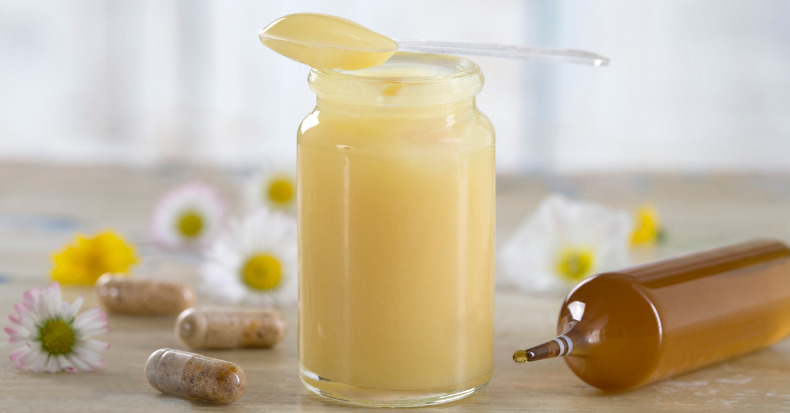Royal jelly is a milk–like secretion of honeybees that is used to feed the larvae in the honeycomb to facilitate development into drones (males), worker bees (infertile females), and queens (fertile females). The National Institutes of Health notes that royal jelly consists of water, proteins, amino acids, fatty acids, simple carbohydrates, vitamins, and minerals and the active ingredient that stimulates and modulates larval development is believed to be a series of major royal jelly proteins (MRJP). The substance is harvested from the individual queen bee cells from beehives and is made into topical creams as well as dietary supplements.
Many people believe royal jelly offers several health-enhancing benefits from slowing the aging process to enhancing the immune system to improving conditions such as diabetes, high cholesterol, asthma, fatigue, hay fever, kidney disease, pancreatitis, PMS, and more. Such claims are not sufficiently substantiated in the literature for firm recommendations to be made. However, as more research is conducted, royal jelly may begin to be recommended in a healthcare setting for one or more conditions. One area that looks promising is the effect royal jelly may have on bone health.
Osteoporosis is characterized by the depletion of bone mineral mass combined with bone micro-architecture deterioration that results in greater bone fragility leading to increased fracture risk. It’s reported that just a 10% reduction in vertebral bone density can double the risk for fracture. It’s estimated that 10 million adults in the United States have osteoporosis and another 44 million are at serious risk for the condition, thus the importance of identifying strategies to preserve bone mass as people age.
In a 2021 study, researchers studied the effects of royal jelly protein supplementation on female rats at risk for osteoporosis. After eight weeks, the equivalent of roughly five years of human life, the rats given a royal jelly protein supplement had greater lumbar spine, tibia, and femur bone mineral density and strength than subjects not given the supplement. The authors of the study note that further research is needed to understand the physiological mechanisms behind bone loss suppression associated with royal jelly protein intake.
If future research supports the benefits of royal jelly protein for preserving bone mass in humans, we may find it being added to lifestyle recommendations for aging adults at risk for osteoporosis such as maintaining a healthy vitamin D status, taking a calcium supplement, eating a healthy diet pattern (like the Mediterranean diet), and engaging in regular weight-bearing exercise.



